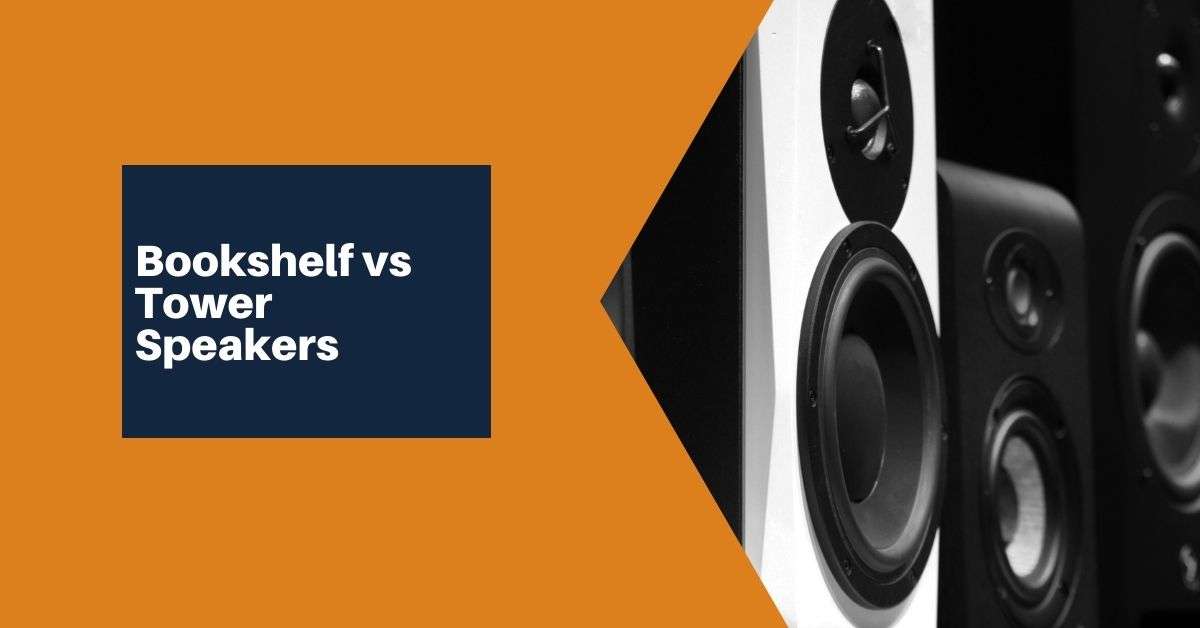The world of speakers can be an overwhelming world to step into, especially if it’s your first time building a home audio setup. There are a plethora of speakers to choose from, each with its own benefits and drawbacks. However, when it comes to home audio setups, most people gravitate towards two primary speaker options: bookshelf speakers and tower speakers.
Both bookshelf and tower speakers work well in home setups for a variety of reasons. They’re adaptable, reliable, and come in a variety of price ranges making them great options for any budget. That’s all not to say that they too don’t have their own unique strengths and weaknesses.
In this guide, we’ll be covering the differences between bookshelf vs tower speakers and why you might favor one or the other.
Table of contents
- What’s is a bookshelf speaker?
- What is a tower speaker?
- 3 factors to consider
- Pros and cons of bookshelf speakers
- Pros and cons of tower speakers
- Consider your primary sound needs
- Common FAQs
What is a bookshelf speaker?
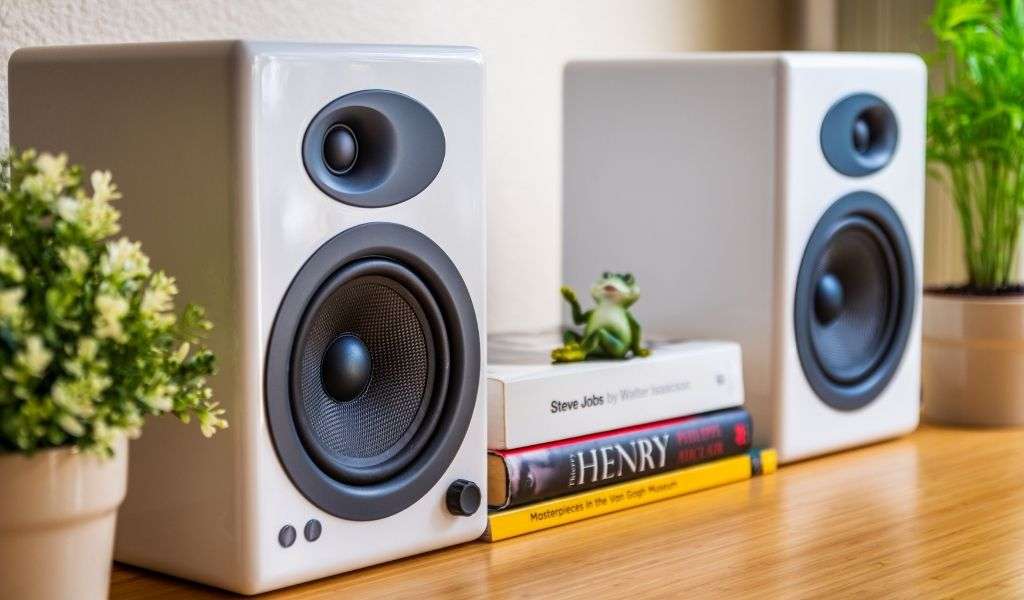
At their simplest form, bookshelf speakers, sometimes called desktop speakers, are smaller speakers meant to be conveniently placed on a shelf, stand, or other elevated surfaces.
Bookshelf speakers can come both as active and passive speakers, meaning some have built-in amplification and some don’t. Most bookshelf speakers are passive, meaning they don’t have built-in amplification, so you can use them with a dedicated stereo or receiver amp.
Bookshelf speakers are usually 2-way speakers, though some are 3-way speakers.
What is a tower speaker?
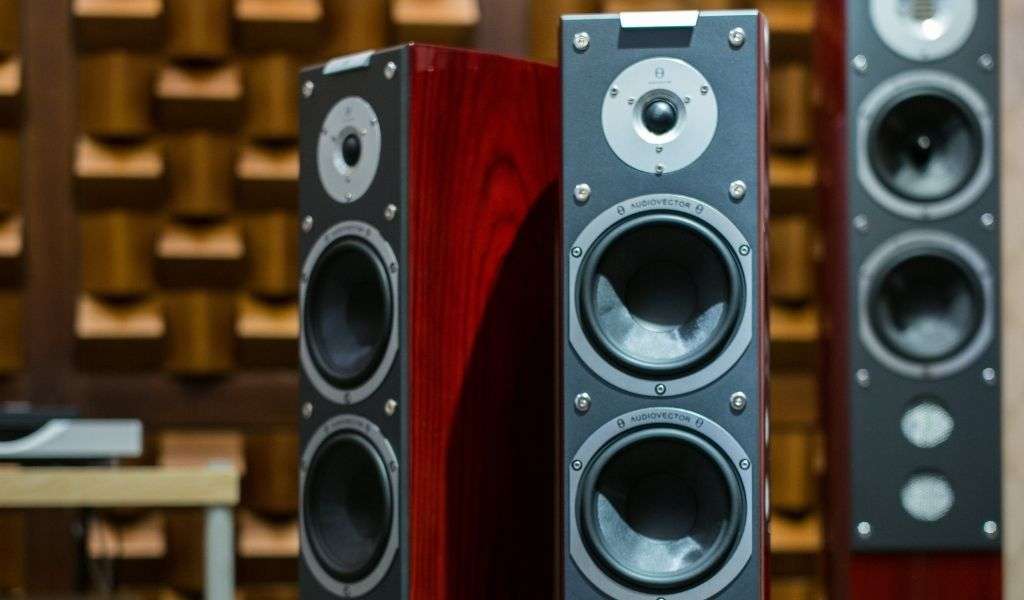
Tower speakers, also sometimes referred to as floorstanding speakers, are meant to be standalone speakers and are large enough to stand on their own without needing to place them on a stand or shelf.
Like bookshelf speakers, floorstanding speakers come in both passive and active variations, though most are typically passive.
The primary audio difference is that tower speakers are often multi-driver designs, meaning they have dedicated bass, midrange, and tweeter drivers. This creates wider dynamics in the overall sound quality.
Check out our best floor speakers for vinyl guide if you’re interested in learning about some of the top floorstanding speakers on the market.
3 factors to consider when deciding between bookshelf vs tower speakers
When weighing the options between bookshelf and tower speakers, there are three primary factors you want to take into consideration before purchasing one or the other.
Sound quality
Sound quality is probably the most important factor to consider when buying any speaker, not just bookshelf or floor standing ones. While there are good speakers available at every budget, generally quality increases with the price tag of the speaker, so keep that in mind.
High sound quality in speakers can be determined by its ability to accurately reproduce the audio signal sent to it without distortion or corruption. In addition to this, a quality speaker should be able to produce sound throughout the listenable range of audio – highs, mids, and lows – in a balanced way that reflects the original audio source.
One characteristic of lower-quality speakers is trouble producing bass frequencies. Speakers that handle bass well typically have a dedicated bass driver to produce the lower frequencies in an audio mix.
Finally, higher-quality speakers should be able to preserve sound quality even at high volumes.
The room the speakers will be in
An often-overlooked factor when considering bookshelf vs tower speakers is the room they’ll be placed in.
From a practical sense, tower speakers wouldn’t work well in an already small and cramped room such as a bedroom. Inversely, you wouldn’t want small bookshelf speakers in a large, open space since they might be harder to hear.
When it comes to the room, consider how the sound will fill the space. You likely won’t need a huge set of tower speakers in your bedroom, but might in a large living room.
We go into further detail on this in our speaker placement guide.
Budget
Last but certainly not least is the budget you have to spend on new bookshelf or tower speakers. Speakers can be purchased for as little as $50 all the way up into the thousands for higher-end models.
Generally speaking, bookshelf speakers will be cheaper than tower speakers, so if you’re on a tight budget it might be best to just limit your search to only bookshelf speakers.
Pros and cons of bookshelf speakers
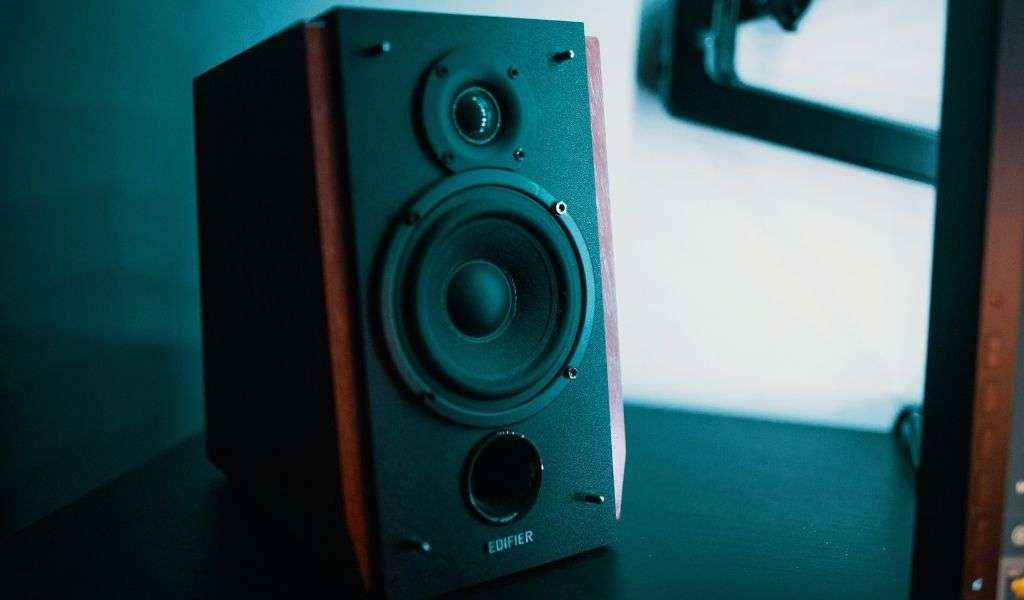
Bookshelf speakers are appealing for a variety of reasons and have options for most budgets. Beginners and audiophiles alike have found reasons to choose bookshelf speakers for their desired set up.
Let’s take a look at their distinct advantages and disadvantages.
Pros
- Can be small in size, making them easy and convenient to place in a smaller space.
- Budget-friendly options available
- Clean and balanced sound
- Active (powered) options
- Easy to move and transport
Cons
- Smaller speakers lack bass frequency response
- Require stands in order to improve performance
- Few 3-way options
- Less max volume
- Less detailed sound reproduction
Pros and cons of tower speakers
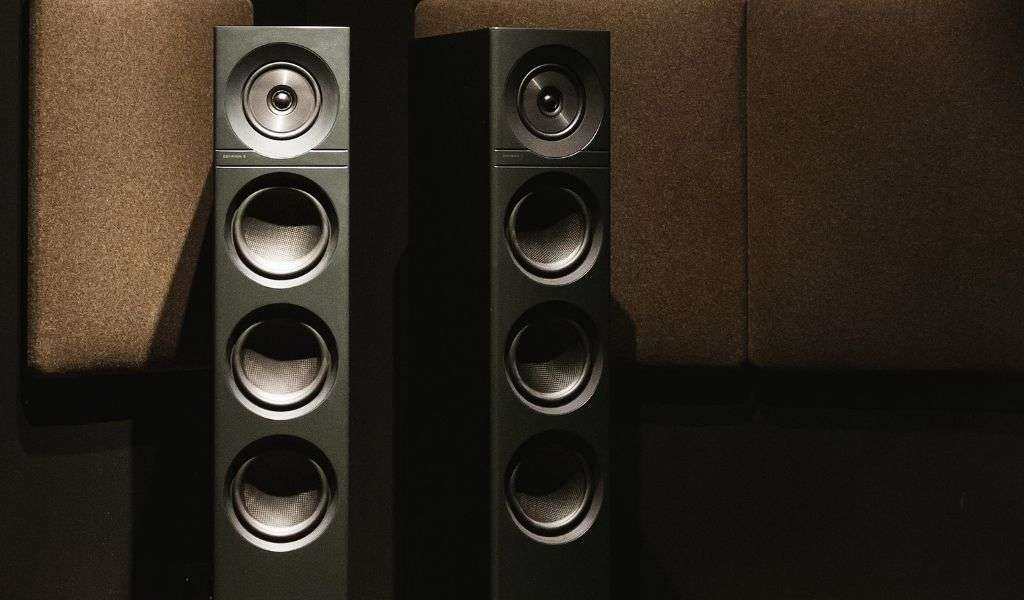
For a more robust and “permanent” option, many audio lovers will choose tower speakers. As mentioned above, tower speakers are great for when you need to fill a larger room with sound.
Let’s take a look at their unique pros and cons.
Pros
- Full range sound reproduction with more dynamic range
- More bass frequency response through a separate bass driver
- Most floorstanding speakers come in a variety of 3-way options
- The speaker’s volume limits are typically higher
- Surround sound effect – feel immersed in the sound
- No stands required; naturally sit around ear height when sitting
Cons
- Typically the more expensive option
- Fewer active speaker options
- Larger and take up floor space, making them harder to hide and move
- The ideal placement location is more important than bookshelf speakers in order to get the best performance
Consider your primary sound needs
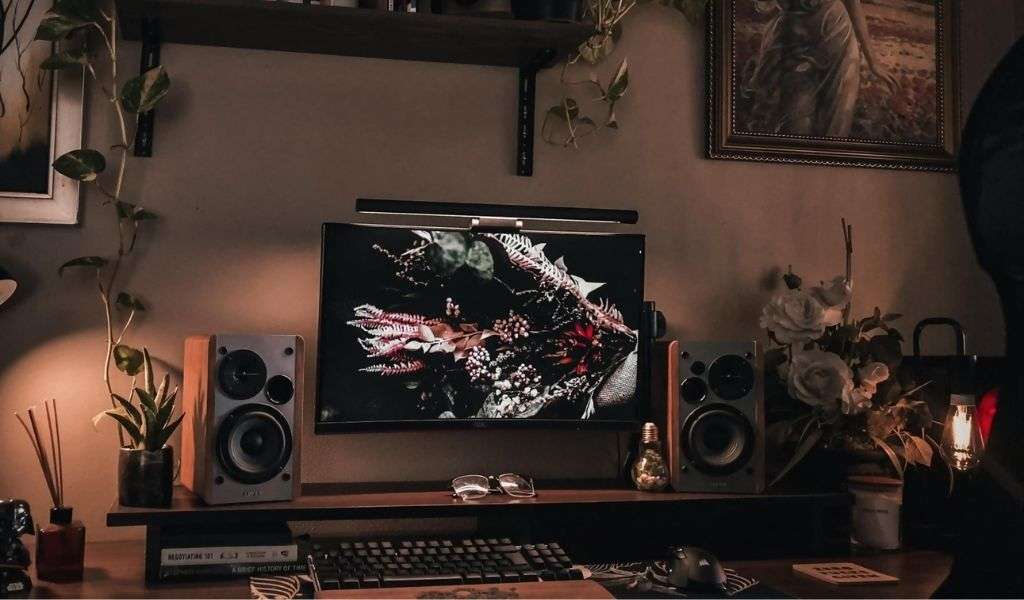
When considering bookshelf speakers or tower speakers, it’s important to consider your primary sound applications first.
For pure music listening in a small room, bookshelf speakers are perfectly fine, especially if they’re of higher quality. While bass response won’t be as noticeable as floorstanding speakers, you will still be able to hear and feel the bass of your music.
Furthermore, bookshelf speakers offer a nice and balanced frequency response. Pairing a subwoofer with a bookshelf speaker can produce an excellent dynamic range for music listening sessions.
However, when it comes to movies in a home theater, tower speakers are generally the better option. Most floor standing speakers are going to have a very wide range of frequency responses. The room energizing output capabilities of tower speakers can intensify the immersion experience of a movie to create an emotional and sensory experience.
For the ultimate surround sound experience, try pairing both tower speakers and bookshelf speakers together!
Common FAQs about bookshelf and tower speakers
We’ve compiled a couple of the most common questions we see when it comes to bookshelf and tower speakers.
Is it OK to put bookshelf speakers on the floor?
It’s typically not suggested to put bookshelf speakers directly on the floor. This can cause an increased bass output that muddies the overall audio mix. For the best sound, place bookshelf speakers at ear listening height.
Do bookshelf speakers need a subwoofer?
Bookshelf speakers don’t need a subwoofer to function, but including a subwoofer will increase the response of lower frequencies and improve the overall dynamics of music or a movie.
Are bookshelf speakers good for home theater?
Bookshelf speakers can be a great choice for home theater, especially when paired with tower speakers in a surround sound application.
Bookshelf vs tower speakers – final thoughts
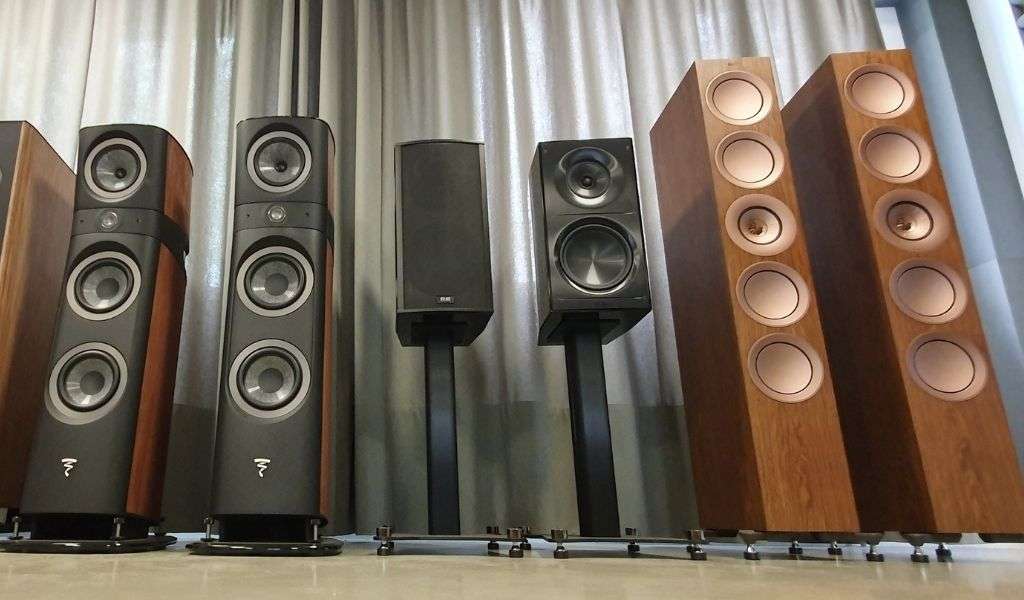
At this point, you should know the benefits and drawbacks of desktop and floorstanding speakers. At this point, it’s time to consider your wants, needs, and current situation.
We hope you found this guide helpful!

Lead Editor / Owner
After beginning his career in the video and audio recording industry, Andrew started HiFi Hippo to share his knowledge and passion for vinyl and vintage audio with other readers.
